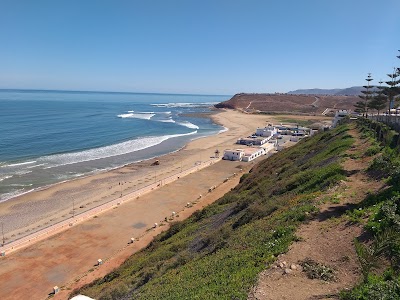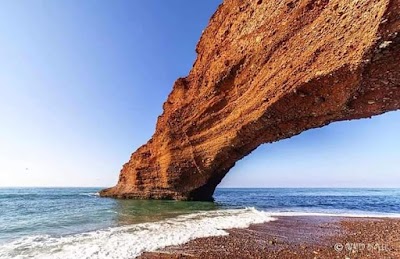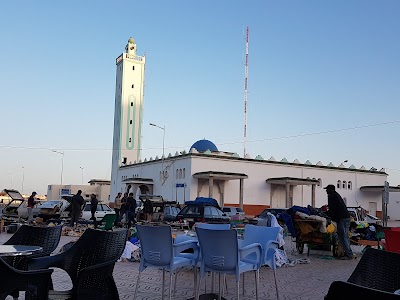Spanish Colonial Architecture (العمارة الاستعمارية الإسبانية)
Overview
Located along the stunning Atlantic coast of Morocco, the small city of Sidi Ifni is a hidden gem that offers a captivating blend of Moroccan and Spanish cultures. This enchanting city, with its unique Spanish Colonial architecture, serves as a testament to a rich and layered history shaped by Spain’s occupation and eventual retreat. Strolling through Sidi Ifni feels like stepping into a time capsule, where history unfolds at every turn.
Founded by Spain in 1934 as a strategic colonial outpost, Sidi Ifni's history of Spanish influence dates back to the late 19th century when Spain first claimed the territory. The city was once the capital of Spanish West Africa, underscoring its significance during the colonial period. The impact of Spanish rule is evident in Sidi Ifni's urban landscape, reflected in its architecture, urban planning, and cultural elements.
One of the most striking features of Sidi Ifni is its Spanish Colonial Architecture. The city’s layout is characterized by wide streets and boulevards lined with whitewashed buildings that showcase Art Deco elements, reminiscent of early 20th-century Spain. Among the must-see sites is the old Spanish consulate, a building that exudes classic Spanish colonial charm with its vibrant tiles and ornate façades. The former governor's residence, now a local administrative building, also displays quintessential Spanish architectural elements, including geometrically patterned tiles and intricate wrought-iron details.
At the heart of Sidi Ifni’s Spanish heritage lies the Spanish Plaza, known locally as the Place de l’Espagne. This public square is encircled by iconic buildings such as the former Spanish church and the courthouse. The square itself is a delightful place to wander and take in the architectural beauty of these historical structures. The striking white and pastel colors of the buildings glisten under the Moroccan sun, creating a picturesque scene that is perfect for photography enthusiasts.
A visit to Sidi Ifni would be incomplete without witnessing the old lighthouse, Faro de Sidi Ifni, perched on a cliff overlooking the ocean. This lighthouse once guided Spanish and Moroccan ships safely to shore, standing as a symbol of the city’s maritime history. The views from the lighthouse are simply breathtaking, offering a panoramic vista of the Atlantic Ocean and the rugged coastline.
Interestingly, the Spanish influence in Sidi Ifni extends beyond architecture; it permeates the local cuisine as well. Visitors can indulge in a delightful blend of Moroccan and Spanish flavors, with seafood taking center stage given the city's coastal location. Savory dishes creatively merge ingredients and techniques from both culinary traditions, providing a unique gastronomic experience.
In 1969, after a period of tense negotiations and conflict, Spain relinquished control of Sidi Ifni back to Morocco. Despite this significant change, the Spanish legacy continues to shape Sidi Ifni’s identity. Today, the city is imbued with a tranquil ambiance, harmoniously blending its colonial past with vibrant Moroccan culture.
Visiting Sidi Ifni offers travelers a unique opportunity to explore an often-overlooked chapter of North African and European history. The city’s preserved colonial architecture serves as a physical narrative of the complex and intertwined histories of Spain and Morocco. Whether you are a history buff, architecture enthusiast, or simply a curious traveler, Sidi Ifni's Spanish Colonial architecture will surely captivate your imagination.
In conclusion, Sidi Ifni is much more than a quiet coastal town; it is a living museum of Spanish Colonial history that invites visitors to step back in time. From its elegant plazas and governmental edifices to the scenic lighthouse, every corner of Sidi Ifni tells a story of days gone by. So, pack your bags and prepare to immerse yourself in the unique charm of this historical gem, where the echoes of Spanish influence continue to resonate harmoniously with Moroccan tradition.





